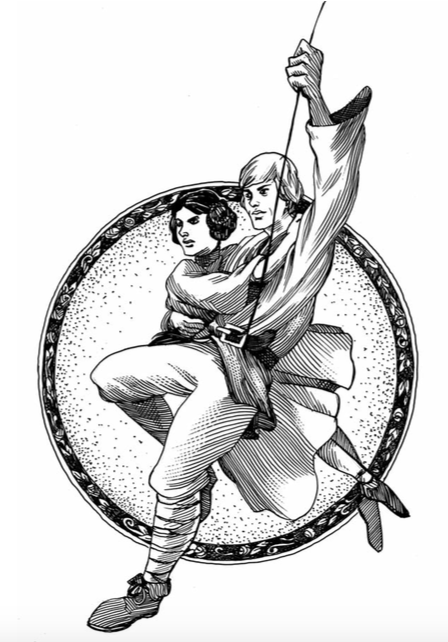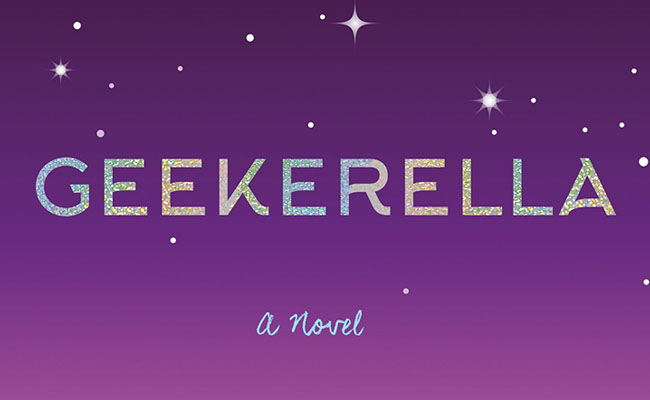Image via HuffPostBooks
I want you to think back to when you were sixteen. What did you listen to? What did you read? What hobbies did you have, and what did you and your friends do on the weekends? Did you ever fight with your parents? Did you ever have a break-up that felt like the world was going to fall to pieces that second? Were you ever told “you’ll get over it, it’s no big deal” whenever you were upset about something? Did you ever keep secrets from family or friends, and it ate at you late at night and it made you feel small and all alone?
Whether or not you were a good kid with excellent grades and no drug record, chances are you knew someone who struggled in school, struggled with friends and grades, probably smoked, maybe they experimented, maybe they even took risks. And if you didn’t know someone in real life, you knew a fictional character that experienced all of that, and it opened your eyes to hardships in life.
Young adult books teach, young adult books say “You’re not alone,” young adult books mirror reality. And it’s because of this terrifyingly perfect, realistic depiction of teen tragedy that several adults ban these books.
The YA genre is not only for escapism, but also a place of comfort, a home for those who feel they have nowhere to turn, that no one understands. Many YA authors are successful because their readership responds to realistic depictions of teen issues, such as death, sex, and drugs. This kind of story isn’t one-size-fits-all teens, but it can be a powerful presence for the teens that do experience some of life’s more horrific events. Teenagers want to read this. As
Kerry Winfrey says in her article “Can YA Books Ever Be ‘Inappropriate‘”:
I didn’t want to read a sanitized, pre-screened selection of books where no one ever used profanity and the characters always made the right decisions, where no one ever got hurt and people never behaved badly. I wanted to read about real life and the real world.
I’m not a teenager anymore, but I’d be willing to bet that teenagers today still feel the same way. Assuming that kids can’t handle books about intense, upsetting, controversial topics is worse than just silly, it’s insulting. Kids aren’t stupid. They know every story doesn’t have a happy ending—not in real life, anyway.
According to the
Centers for Disease Control and Prevention, 48% of teen deaths are caused by unintentional injuries, and 73% of those injuries were from vehicle accidents. 11% of deaths are from suicide, and 6% are from cancer. Teen sexual abuse is rather high, as well. According to
Teen Help, 1 in 4 girls and 1 in 6 boys are sexually abused by the age of 18, and 70% of those teens know the abuser. 69% of the abuse occurs in the home, suggesting correctly that abuser is typically a member of the family.
Through fiction, YA literature allows the goody-two-shoeses and star athletes to sympathize with the girl or boy in the back of the classroom, silent and misunderstood, holing up their problems and blaming themselves for sad events that have happened to them. Learning about hardship and suffering is safest through a book–what parent would rather have their child experience suffering first-hand?
With these statistics in mind, let’s take a look at six best-selling YA books that respect the intelligence of the reader, move the reader, and accurately portray teen tragedy.
Looking for Alaska by John Green — John Green knows teens. He knows teens so well, it scares most adults into banning this book. Published in 2005, Looking for Alaska won ALA’s 2006 Michael L. Printz Award, was a 2005 LA Times Book Prize Finalist, NY Public Library Book for Teen title, Booklist Editor’s Choice, and School Library Journal Best Book of the Year.
It appears to be banned for sexually explicit content (which is, quite honestly, not explicit at all), foul language (teens hear worse things on TV), and drugs and alcohol. Yet it’s the readers, not the banners, who are moved by Looking for Alaska because of its accurate portrayal of sudden death, intense love, and the quest to find meaning in an ever-changing world. The death — a car accident — shocks the protagonist to the core, motivating him to uncover the truth. It’s a book that demonstrates how far one would go for those they love.

And it doesn’t matter if you are or know someone with cancer — this book teaches readers to live each day like it is their last. It was well-received by the New York Times, NPR, Time, and Entertainment Weekly; Jodi Picoult and Markus Zusak raved over the book. TIME Magazine named it #1 Fiction Book of 2012, and The Fault in Our Stars was #1 on the New York Times Bestseller list for seven consecutive weeks, and has remained a bestseller since. Hazel and Augustus, both cancer patients and in love, continue to enjoy the life they were given despite their limitations and situations. It’s touching, and a comfort for those who have or know someone with cancer. There is a book out there just for them, and it’s heartfelt.

The Tragedy Paper by Elizabeth LaBan — Highly praised and well-received, I have yet to hear if this book is receiving any controversy. But some of the content — emotionally abusive boyfriends, drinking, peer-pressure, and teen injuries — may cause parents to push this book away. LaBan creates a fantastic protagonist in Tim, an albino boy who struggles to maintain friendships, who is entirely sympathetic, incredibly intelligent, and portrays the very real and tense struggle to make friends and keep bullies away. Any teen who has been teased for one reason or another will relate.
If I Stay by Gayle Forman — The title and cover give off that haunting, morbid edge that makes people assume this is about suicide. But this is not a suicide piece. It’s about a girl who had everything and immediately becomes the only survivor of a car wreck. While she’s in a coma, she debates between waking up and living this new life of loss, or to stay asleep and end.
To this, I ask you: was there ever a time in your life when you wondered what it would be like to disappear? Who would notice? Who would care? What if you were faced with a life or death decision and death seemed to be the easier answer? I’m not asking “would you commit suicide,” but it is certainly a struggle many teenagers face when something bad disrupts their life.
They struggle to find a way to move on and make the most of a terrible situation. Forman explores the possibilities in this beautiful heartache of a story, which made it to the New York Times Bestseller list along with several others in this post.
Stolen by Lucy Christopher — Like Green’s Looking for Alaska, Stolen received the 2011 Printz Honor Award for literary excellence, and it’s easy to see why. For anyone who is the least bit curious about people who stay in relationships with abusers, or why kidnapped girls stay with the kidnapper and fall in love, this is the book to explore. Think Beauty and the Beast, the romantically misconstrued version of Stockholm Syndrome.
In short, a girl is kidnapped and falls in love with her kidnapper, but Christopher gets inside the reader’s mind and makes the reader fall in love with the kidnapper as well. The reader can’t help but experience Stockholm Syndrome. This awareness and realization can help teens spot tricky relationships and understand the difficulties of abuse.

Perks of Being a Wallflower by Stephen Chbosky — Published in 1999 and banned several times since, this book has developed such a cult-like following that it cannot be ignored. It’s such a quotable book, with an intelligent protagonist deeply in love with literature and music. Charlie writes letters to the reader, talking about the books he’s reading for class (many of which are banned books), music he’s listening to (Bowie, Beatles, U2, Genesis, Nirvana, Pink Floyd), movies he’s seen (Rocky Horror, cult classic!), and the friends he’s making. Yes, there are instances of sexual content, a gay couple, violence, drugs and alcohol, and abuse, but Chbosky’s Charlie does not glorify nor preach against these things. There is a reason for every event: it is a growing experience. A sexually abused boy with naïve yet profound thoughts grows exponentially as a character across his first year of high school. There is a character for everyone in this book — surely that is why it’s a classic.
It’s interesting to note that these books — frequently banned, frowned upon, or discouraged because of their content — are in fact winning awards, turning into movies, and making it on bestseller lists. They are praised by young adults, critics, and authors. The brutal yet pure honesty behind the topic touches readers. Why ban a book that a teenager can learn from safely and enjoy?
—
Laura Crockett is a graduate student, bookseller, Anglophile, tea devotee, musician, and book hoarder. Everything good in her boils down to her Midwestern upbringing. Follow her Downton Abbey obsessions on Twitter (@LECrockett) and book interests on her blog http://scribblesandwanderlust.wordpress.com









